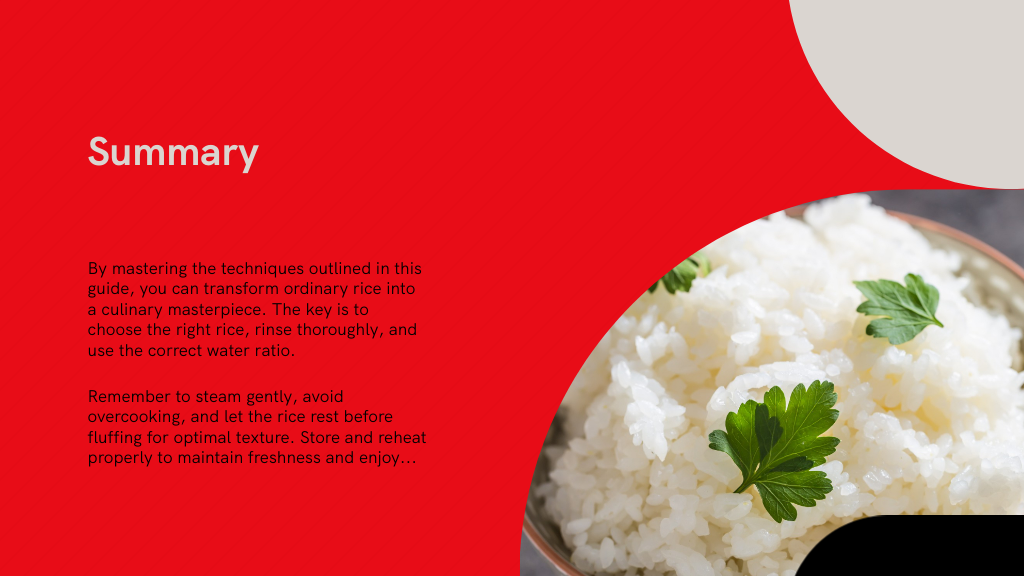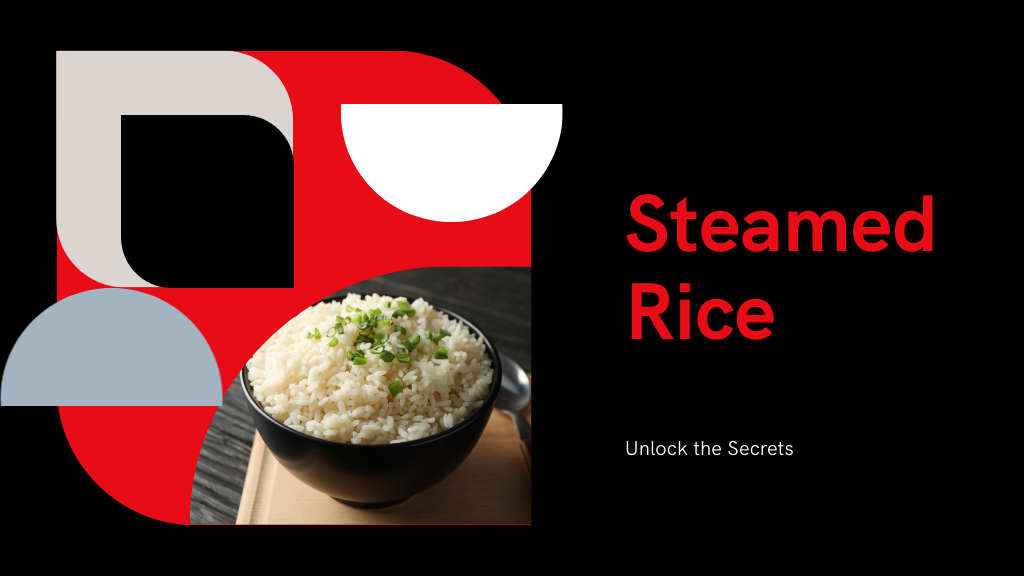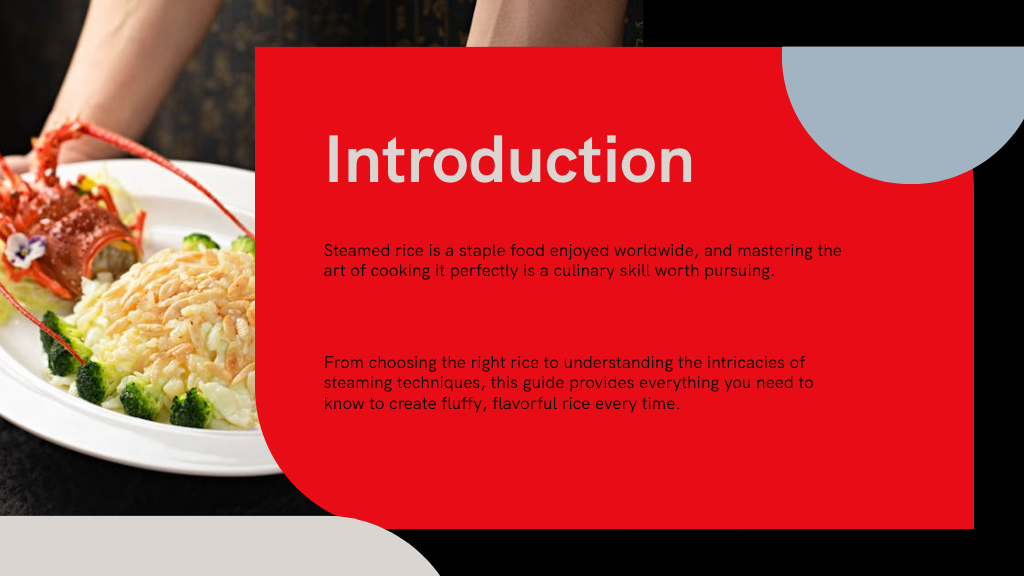
To make perfect steamed rice, start by choosing the right grain—medium or long grain for fluffiness or short grain for stickiness. Rinse thoroughly to remove starch, and soak if using basmati to improve texture. Measure your water precisely, usually 1.3 to 1.5 cups per cup of rice. Use gentle heat, avoid overcooking, and let rice rest before fluffing. Proper storage and reheating keep it fresh. Keep going to uncover tips on flavor and advanced steaming methods.
Choosing the Right Type of Rice
When choosing the right type of rice for steaming, you’ll want to contemplate how sticky or separate you prefer the grains. Medium and long grain white rice are excellent options if you like your rice fluffy with distinct grains. These varieties work well in many steamed rice recipes and are versatile for different dishes.
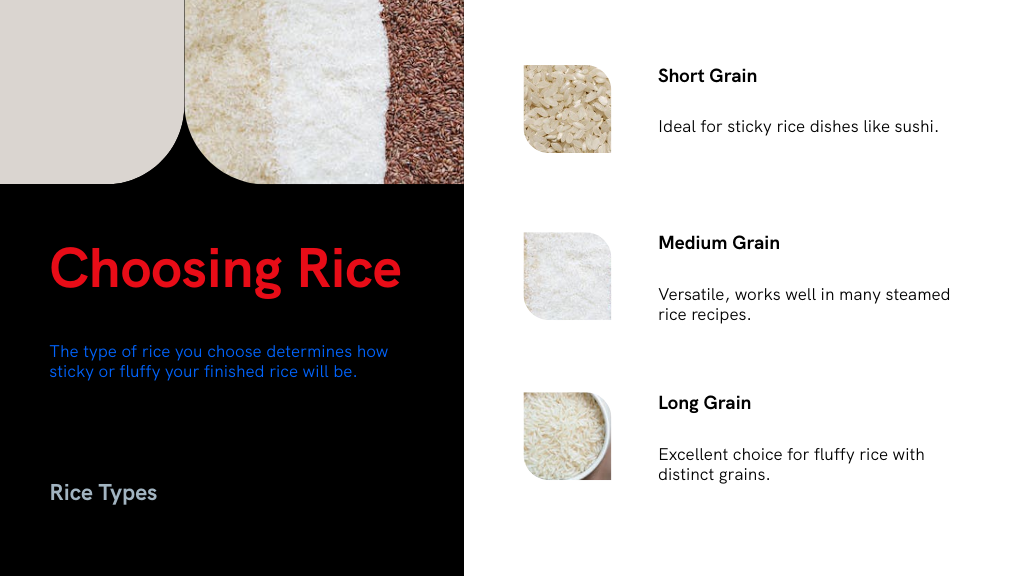
If you want stickier rice, short grain or sushi rice is your best bet, especially for recipes like sushi rolls. For less sticky rice, Basmati is ideal.
Importance of Rinsing and Soaking
Anyone who’s steamed rice knows that rinsing and soaking play an essential role in achieving the perfect texture. Rinsing rice under running water removes excess starch, preventing the grains from becoming gummy during cooking. You should rinse until the water runs clear, usually a couple of minutes, for a cleaner final product.
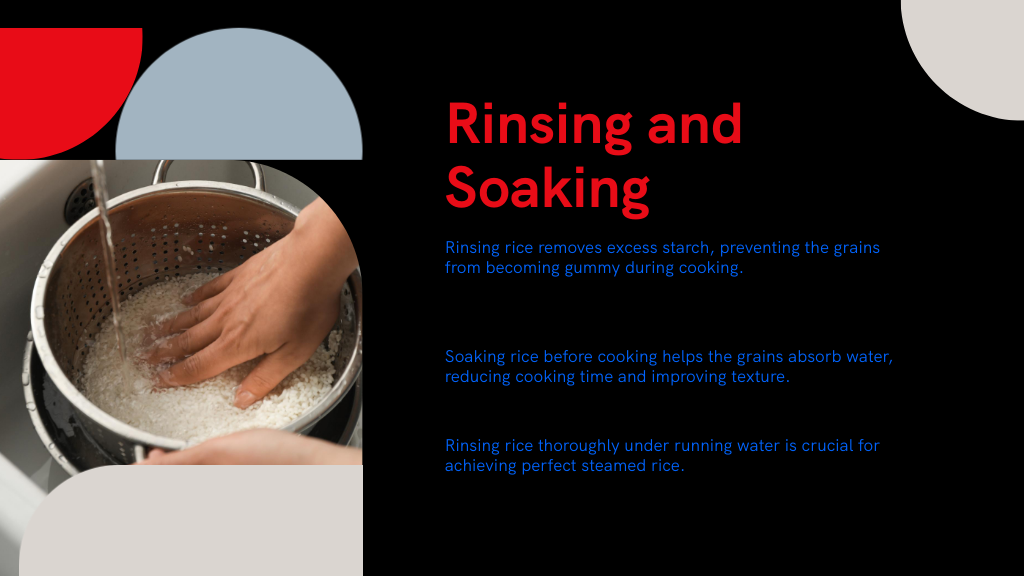
Soaking rice before cooking helps the grains absorb water, reducing cooking time and improving texture. For example, soaking basmati rice between 30 minutes and 2 hours prevents breakage and guarantees even cooking.
Additionally, rinsing rice means you can slightly reduce the water amount—about two tablespoons less per cup—when steaming. Incorporating proper rinsing and soaking techniques elevates your steamed rice, making it fluffier and less sticky every time.
Measuring Rice to Water Ratios
Rinsing and soaking rice not only improve texture but also influence how much water you’ll need during cooking.
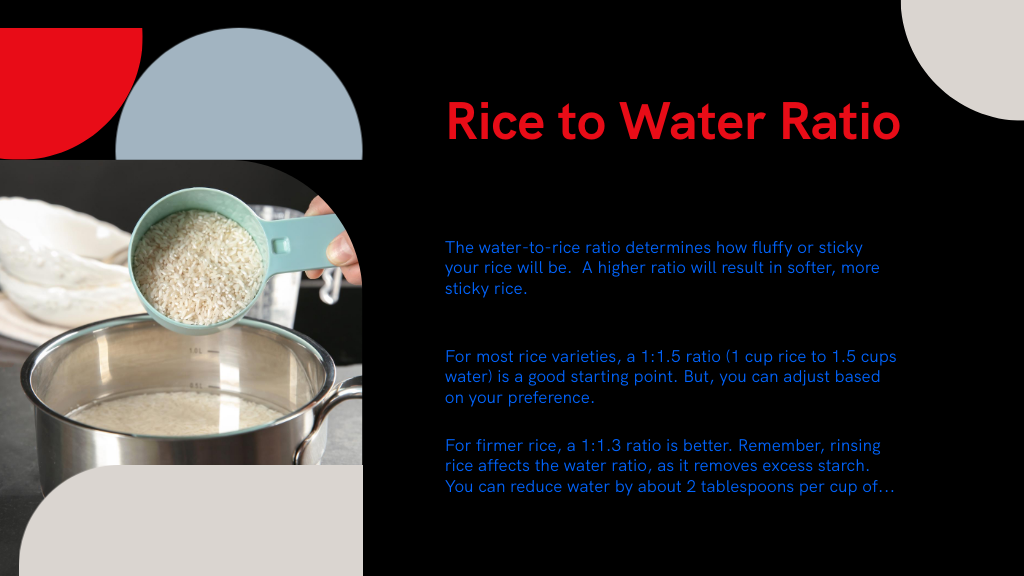
Rinsing and soaking rice enhance texture and affect the water ratio needed for perfect cooking.
When learning how to steam rice in a pot or use a white rice steamer, getting the rice-to-water ratio right is essential. For steaming, aim for 1 cup of rice to about 1.3 to 1.5 cups of water, depending on whether you want firmer or softer rice. If you’ve rinsed your rice, reduce water by about 2 tablespoons per cup.
When cooking long grain white rice on the stovetop, use 1 cup of rice to 1.5 cups of water for fluffy results. Adjust slightly to 1.75 cups water for softer rice. Precise measurement guarantees perfectly cooked, tender grains every time.
Stovetop Steaming Method
Mastering the stovetop steaming method requires just a few simple steps to achieve perfectly tender rice. To cook steamed rice this way, start by soaking your long grain rice for at least 10 minutes; this softens the grains and improves texture. Drain the rice and place it in a shallow heat-proof container.
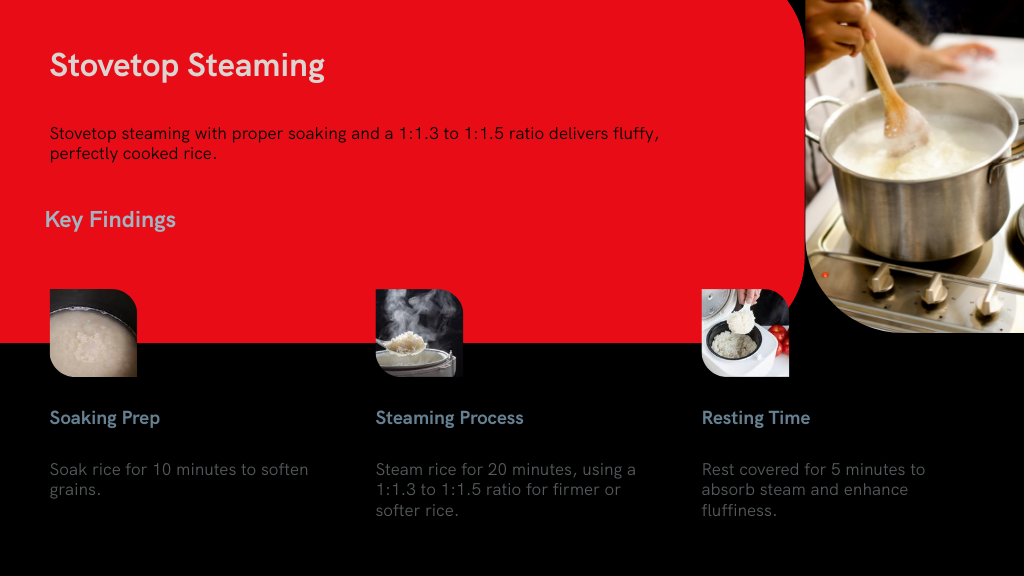
Add water using a ratio of 1:1.3 for firmer rice or 1:1.5 for softer rice. Next, set the container in a steamer filled with cold water. Cover and steam on high heat for about 20 minutes without lifting the lid.
Finally, let the rice sit covered for 5 minutes to enhance fluffiness. Following these steps will show you exactly how to prepare long grain rice and how to make steamed rice that’s light and perfectly cooked.
Oven Steaming Technique
One straightforward way to steam rice is by using your oven, which lets you prepare larger batches without constant attention. To cook steamed white rice this way, combine long grain white rice with boiling water in a covered casserole dish at a 1:1.5 ratio. Bake it at 200°C (390°F) for 35 minutes.
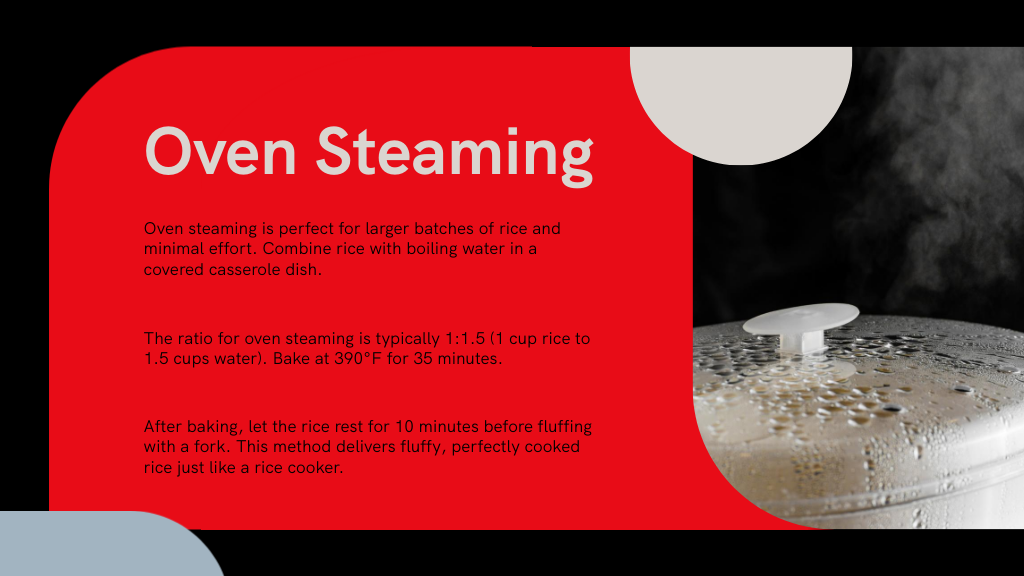
This method answers the question “how do you cook steamed rice” by offering a hands-off approach that yields fluffy, perfectly cooked grains similar to a rice cooker. After baking, let the rice rest for 10 minutes before fluffing with a fork to improve texture.
This oven steaming technique is ideal if you want to cook steamed white rice efficiently and with minimal effort, especially when preparing meals for a crowd.
Microwave Steaming Instructions
Steaming rice in the microwave is a quick and convenient method that requires minimal effort. Start by rinsing 1 cup of rice and combining it with 2 cups of boiling water in a round microwave-safe container, making sure there’s enough room for the rice to expand.
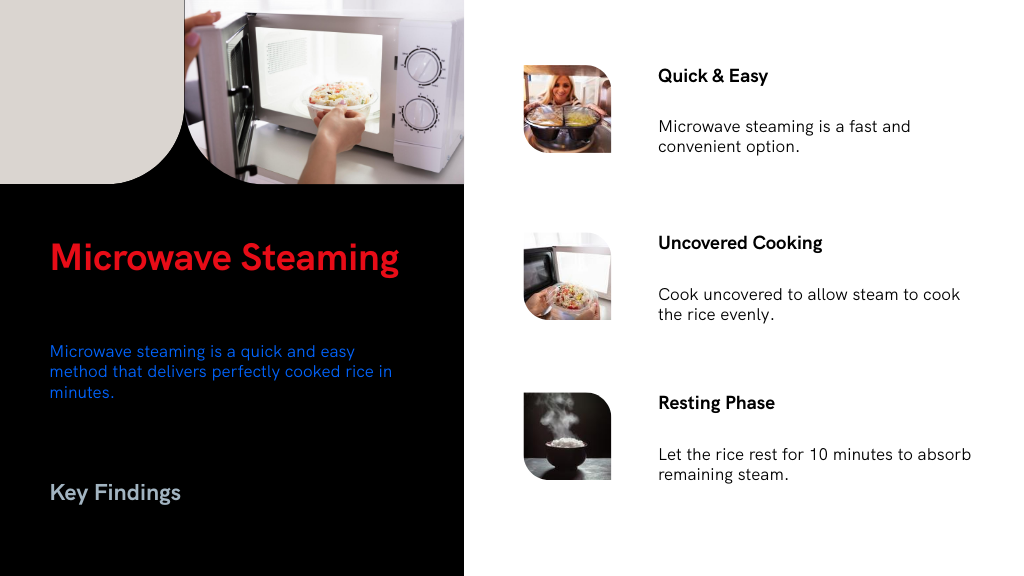
Microwave the mixture uncovered on high for 12 minutes, which allows steam to cook the rice evenly without trapping moisture under a lid.
Cook uncovered on high for 12 minutes to let steam evenly cook the rice without trapping moisture.
After microwaving, cover the container and let the rice rest for 10 minutes so residual steam can be absorbed, improving texture. Finally, fluff the rice with a fork or rice paddle before serving to get that perfect, fluffy consistency. This hands-off technique is ideal when you need steamed rice quickly without fuss.
Common Mistakes to Avoid
One of the biggest mistakes you can make is using too much water, which leads to mushy, gummy rice. You also want to avoid cooking on high heat, as it can scorch the rice and cause uneven cooking. Timing matters too—cutting the cooking or resting time short can ruin the texture you’re aiming for.

Overwatering and Gummy Texture
If you use too much water when cooking rice, you'll end up with a soft, gummy texture that's far from ideal. The key is sticking to the right ratio—typically 1 cup of rice to 1.5 cups of water on the stovetop.
Remember, if you rinse your rice beforehand, reduce the water by about 2 tablespoons per cup since rinsing adds extra moisture. Also, keep your heat steady at medium or low during simmering to prevent scorching, which can worsen gumminess.
Before taking the rice off the heat, tilt the saucepan to check that all water’s absorbed. Finally, let the rice rest undisturbed for a few minutes after cooking; this helps the grains soak up any leftover moisture and results in fluffier, less sticky rice.
Incorrect Heat and Timing
Although it might be tempting to crank up the heat for faster cooking, using too high a temperature can scorch your rice or cook it unevenly.
Always start with medium heat and adjust to maintain a gentle simmer. Cooking rice for too long can make it mushy, so stick to the recommended time—about 20 minutes for steaming.
Don’t open the lid during cooking; letting steam escape disrupts the process. Once done, let the rice rest covered for at least 5 minutes to develop the right texture before fluffing.
Also, pay close attention to the water-to-rice ratio—usually between 1:1.3 and 1:1.5—to avoid undercooked or overly sticky rice. Getting heat and timing right guarantees perfectly steamed rice every time.
Enhancing Flavor While Steaming
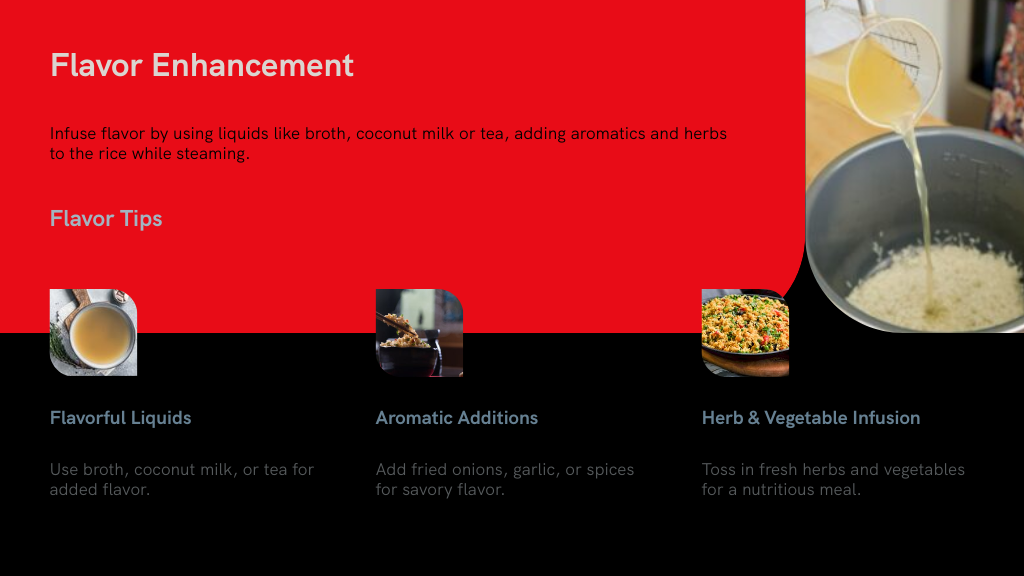
When you want to elevate your steamed rice, swapping plain water for flavorful liquids like tea, coconut milk, or broth can make a big difference. These liquids infuse the rice with added depth and richness.
Don’t forget to season the steaming liquid with a pinch of salt, a splash of oil, or some butter to boost the overall taste. Adding aromatics such as fried onions, garlic, or spices before steaming creates a delightful aroma and savory layer.
You can also toss in vegetables or fresh herbs directly into the steamer for a nutritious, flavorful one-pot meal. Using a bamboo or metal steamer helps steam circulate evenly, ensuring your rice cooks perfectly while preserving those enhanced flavors.
Proper Resting and Fluffing of Rice
Enhancing your steamed rice with flavorful liquids and aromatics sets a great foundation, but how you handle the rice after cooking plays an equally important role in the final texture.
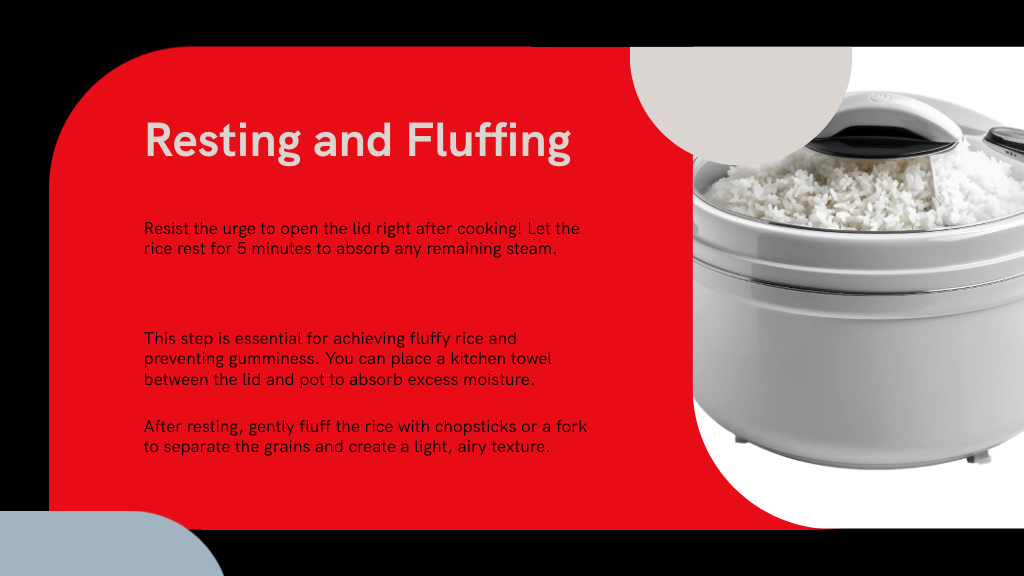
Once the rice is done, resist the urge to lift the lid immediately. Keeping it covered and letting it rest undisturbed for five minutes allows residual steam to finish cooking the grains evenly, preventing gumminess. For even better results, place a kitchen towel between the lid and pot during this resting phase to soak up excess moisture.
After resting, gently fluff the rice with chopsticks or a fork to separate the grains and avoid clumping, especially with medium and long grain varieties. This simple step guarantees your steamed rice is light, fluffy, and perfectly textured every time.
Storing and Reheating Steamed Rice
To keep your steamed rice fresh, store it in an airtight container and refrigerate within two hours of cooking. When reheating, add a little water and cover it to maintain moisture and texture. Following these simple steps helps you enjoy rice that tastes just as good as when it was freshly made.
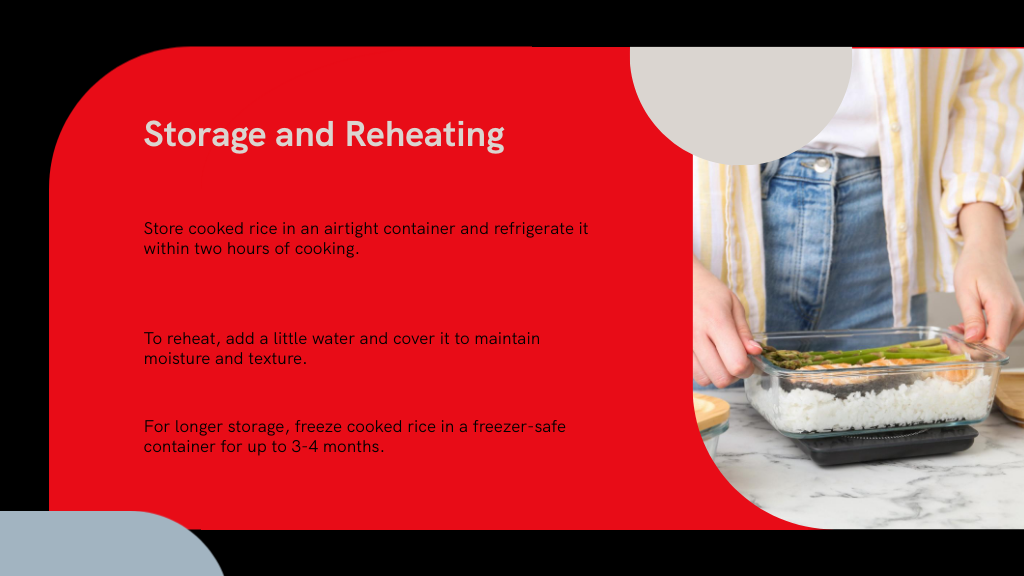
Proper Storage Tips
Although steamed rice is delicious fresh, knowing how to store and reheat it properly can save you time and reduce waste.
Once your rice has cooled, store it in an airtight container in the refrigerator, where it’ll stay good for up to four days. If you want to keep it longer, freeze the rice in a freezer-safe container for three to four months, but make certain it’s completely cooled first.
When you’re ready to use refrigerated rice, add a couple of teaspoons of water per cup and cover it before microwaving for about a minute to keep it moist. For frozen rice, thaw it overnight in the fridge to guarantee even heating.
Safe Reheating Methods
Knowing how to store your steamed rice safely is just part of the process; reheating it correctly is equally important to keep it tasty and safe to eat.
When reheating, add about 2 teaspoons of water per cup of rice, cover it, and microwave for roughly one minute to maintain moisture and avoid dryness. For more even heating, spread cold rice in a lightly oiled baking dish, cover with foil, and warm it in a 325°F (160°C) oven for about 20 minutes.
Always heat rice thoroughly and avoid reheating it multiple times, as this increases the risk of foodborne illness. If you’ve frozen your rice, thaw it first before reheating. Following these steps guarantees your rice stays safe and enjoyable.
Maintaining Rice Texture
When you want your steamed rice to stay fluffy and enjoyable after cooking, how you store and reheat it makes all the difference.
Store leftover rice in an airtight container and refrigerate it within two hours to keep it fresh and safe. For best texture, reheat rice by adding a bit of water and covering it to trap steam. Stir halfway through reheating to guarantee even warmth and prevent dry spots. Using leftover rice in fried rice or soups also helps maintain its appeal.
- Keep cooked rice in an airtight container for up to 4 days in the fridge or freeze for 3–4 months
- Add 2 teaspoons of water per cup before microwaving to restore moisture
- Stir rice halfway through reheating for a consistent texture
- Avoid leaving rice at room temperature over 2 hours to prevent spoilage
Conclusion
Now that you know the secrets to steaming splendid, soft rice, start selecting the simplest, smartest grains. Remember, rinsing and resting really revitalize the rice’s texture. With careful cooking—whether stovetop or oven—you’ll avoid common cooking chaos and create consistently comforting results. Flavorful finishes and flawless fluffing further fuel fantastic feasts. So, savor the satisfaction of steaming your staple perfectly every single time, and turn your kitchen into a rice-ruling domain!
